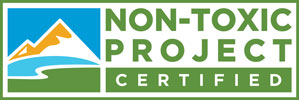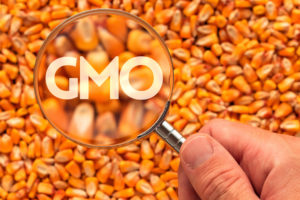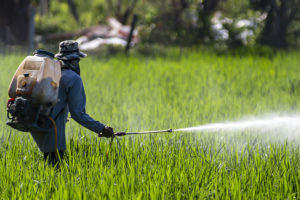Bacterial Contamination: How Can it Impact Your Health?
Caitlin Beale, MS, RDN
Bacterial Contamination: Unless you’re growing and harvesting your own food, most items in your kitchen traveled far to get to your home. The journey starts at the farm, moves from harvest to the production line and into the delivery truck bringing goods to your local grocery store or restaurant. In some ways, it’s incredible that with so many possible points of human contact, more of our food isn’t contaminated.
Our body can withstand a certain amount of pathogenic bacteria as our healthy gut bacteria, and stomach acid helps to destroy invaders. Still, there are certain types of bacteria that are more dangerous. While most bacteria are not a problem, bacterial pathogens can cause disease after we come into contact with our food, water, or physical contact (1).
Your grandmother was right when she warned you not to lick the raw cookie dough batter.
However, bacterial contamination risk is not limited to raw eggs. The CDC keeps an updated list with current and past national multi-state foodborne outbreaks, and 2019 shows outbreaks stemming from pre-cut fruit to beef, deli meat, and even to sprouts and lettuce (2). Bacteria also isn’t only a contamination risk for food but also in anything else we ingest, such as supplements.
This article examines the risk of bacterial contamination in food and supplements, symptoms of illness, and ways to avoid getting sick.
What are the common forms of bacterial contamination?
While the CDC keeps an extensive list of potential pathogens, there are several that are common culprits for bacterial contamination:
- Salmonella: Salmonella is a bacteria that lives in the intestinal tract of humans and animals. Exposure to salmonella occurs via the feces of animals or humans. Humans can get sick if they eat raw or undercooked animal products or by fruits or vegetables that are contaminated by humans. Several types of salmonella bacteria can make you sick (3). The CDC reports 1.35 million salmonella infections in the US every year, with food being the primary source (4).
- Staph (Staphylococcus aureus) is a bacteria that produces toxins that cause illness.
The CDC states that about 25% of people and animals naturally have staph on their skin and in their nose (5). Staph bacteria usually isn’t a problem for people who are healthy but can cause issues when it makes toxins. Staph is passed into food from people preparing food and not washing hands. Once the bacteria is in the food, it can create toxins that cause illness. While the bacteria are destroyed with cooking, the toxins can be resistant to heat.
- E Coli. E Coli (Escherichia coli) is also naturally found in the intestines of people, as well as the environment. There are many types of E. coli bacteria, with a few able to cause illness in humans through contaminated or undercooked food (6).
- Bacillus Cereus. Bacillus cereus is spore-forming bacteria found in soil and water. B. cereus releases toxins that cause illness in humans (7).
Bacterial Contamination: How are products contaminated?
The food production chain encompasses all the stops and sources for potential contamination before food or products are in front of a consumer. Contamination can occur at any time – from the harvesting or farming of the food to product preparation. The points along the chain include how a product is taken care of in fields or the farm, how it is packaged and processed, how it is distributed to the restaurant or grocery store, and finally how you store or cook it in your own home (8).
Most of our food in the US is handled by people trained in safety and sanitation, to reduce the risk of food safety breaches. Unfortunately, despite best efforts, food safety is still prevalent. The CDC estimates that each year 1 in 6 Americans will be sick from contaminated products, and 3000 people will die due to foodborne illness complications (9).
Bacterial contamination in supplements.
While food is typically the most significant source of bacterial contamination leading to illness in humans, supplements can also be an issue. Several studies examining the potential for bacterial contamination found that contaminated dietary supplements can not only pose a health risk but also cause the product to spoil and degrade.
A study examining supplements made with plant-derived ingredients found bacteria in many of the supplements tested, with some exceeding tolerable limits with such bacteria as staph and bacillus (10). The direct impact of bacterial contamination was also seen with two patients who suffered from a severe liver injury after ingesting popular nutrition products (11).
Who is at higher risk of getting sick?
Like many illnesses, while anyone can get sick, certain groups of people are at higher risk of getting sick because of alterations in their immune systems, making it more difficult to fight off the bacteria. Higher risk groups include (12):
- Older adults over the age of 65
- Children under the age of 5
- People with weak immune systems such as those with cancer, HIV/AIDS, diabetes, or kidney disease.
- Pregnant women
Bacterial Contamination: What are the symptoms of foodborne illness?
While symptoms can vary depending on the type of bacterial contamination, gastrointestinal symptoms are most common, including upset stomach and cramping, nausea, vomiting, and diarrhea. Fever can also be a symptom. More rare and serious complications include kidney failure, brain damage, and death (13).
One of the lesser-known complications of illness related to bacterial pathogens is a condition called post-infectious irritable bowel syndrome (IBS). Post-infectious IBS occurs when gastrointestinal symptoms continue long after the acute episode of poisoning. While the reasons this happens to some people are not well-understood, it appears that inflammation in the gut, along with changes in the intestinal barrier, and the balance of healthy bacteria may cause long-lasting symptoms (14).
Reactive arthritis is another condition that can occur as a result of a bacterial infection. While rare, reactive arthritis can cause inflammation in the knees, ankles, and feet, as well as eyes, skin, and urethra (15).
How can you avoid eating or using contaminated products?
There are several ways to protect yourself from foodborne illness at home. Simple food safety techniques can help keep you healthy, including:
- Washing hands before cooking and after touching raw meat, poultry, fish, and eggs
- Use different cutting boards for meat and vegetables
- Cook food to proper temperatures
- Put food directly in the fridge and avoid leaving it out too long
There are also several surveillance programs to help keep consumers safe for food and supplement use.
The FDA oversees the Current Good Manufacturing Practices (CGMPs) designed to help ensure food and product safety by monitoring individual facilities’ hygiene, food production, processing, and sanitation practices (16). All supplements and food production facilities are required to follow these practices to ensure quality control. However, many professional-grade supplement companies choose additional third-party testing for contaminants to help ensure consumer safety.
The CDC also uses a surveillance system to track foodborne outbreaks in the US with local health agencies reporting any outbreaks (2). These surveillance systems don’t prevent the root cause of contamination. Still, they do notify immediately after any reported issues to help consumers become aware of any potentially contaminated products they may have at home.
Bacterial Contamination: The Takeaway
While bacterial contamination in food and supplements continues to be an issue, even with current practices, remembering several essential tips will help you to avoid getting sick. Foodborne illness can be challenging to track because not everyone will be tested or report feeling ill. Food safety in your kitchen is an essential step to avoiding food poisoning – including cooking to appropriate temperatures and storing food safely.
Choose restaurants with current health grades posted by the local department of health. Seeking out supplements with third-party testing for contaminants is also an essential factor for avoiding poor quality products. Awareness and knowledge are vital components of staying healthy and safe.
References:
- “Pathogenic Bacteria: List of High Impact Articles: PPts: Journals: Videos.” IMedPub LTD, www.imedpub.com/scholarly/pathogenic-bacteria-journals-articles-ppts-list.php.
- “List of Selected Multistate Foodborne Outbreak Investigations.” Centers for Disease Control and Prevention, Centers for Disease Control and Prevention, 10 Mar. 2020, www.cdc.gov/foodsafety/outbreaks/multistate-outbreaks/outbreaks-list.html.
- Stöppler, Melissa Conrad. “Salmonella Poisoning Symptoms, Signs, Causes, Treatment & Prevention.” MedicineNet, MedicineNet, 17 Jan. 2020, www.medicinenet.com/salmonella_food_poisoning_salmonellosis/article.htm.
- “Salmonella Homepage.” Centers for Disease Control and Prevention, Centers for Disease Control and Prevention, 25 Mar. 2020, www.cdc.gov/salmonella/.
- “Staphylococcal (Staph) Food Poisoning.” Centers for Disease Control and Prevention, Centers for Disease Control and Prevention, 9 Aug. 2018, www.cdc.gov/foodsafety/diseases/staphylococcal.html.
- “E. Coli (Escherichia Coli).” Centers for Disease Control and Prevention, Centers for Disease Control and Prevention, 26 Feb. 2020, www.cdc.gov/ecoli/index.html.
- Bintsis, Thomas. “Foodborne pathogens.” AIMS microbiology vol. 3,3 529-563. 29 Jun. 2017, doi:10.3934/microbiol.2017.3.529
- “How Food Gets Contaminated – The Food Production Chain.” Centers for Disease Control and Prevention, Centers for Disease Control and Prevention, 5 Sept. 2017, www.cdc.gov/foodsafety/production-chain.html.
- “CDC and Food Safety.” Centers for Disease Control and Prevention, Centers for Disease Control and Prevention, 15 Nov. 2018, www.cdc.gov/foodsafety/cdc-and-food-safety.html.
- Dlugaszewska, Jolanta et al. “Are dietary supplements containing plant-derived ingredients safe microbiologically?.” Saudi pharmaceutical journal : SPJ : the official publication of the Saudi Pharmaceutical Society vol. 27,2 (2019): 240-245. doi:10.1016/j.jsps.2018.11.005
- Stickel, Felix et al. “Severe hepatotoxicity following ingestion of Herbalife nutritional supplements contaminated with Bacillus subtilis.” Journal of hepatology vol. 50,1 (2009): 111-7. doi:10.1016/j.jhep.2008.08.017
+warren@nontoxicproject.com
This is fully edited.




Leave a Reply
Your email is safe with us.